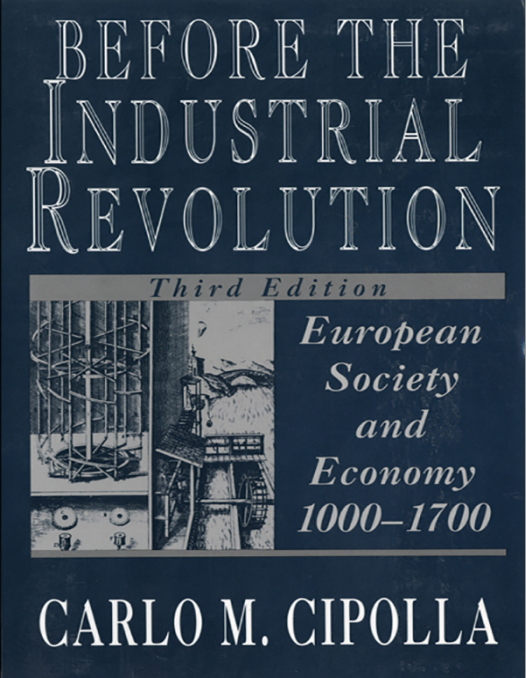Before the Industrial Revolution: European Society and Economy, 1000-1700 by Carlo M. Cipolla

Part I
A STATIC
APPROXIMATION
1
DEMAND
TYPE OF ANALYSIS
The functioning of any economic system can be looked at from two points of
view, that of demand and that of supply. The two perspectives are intimately
linked and reflect the same reality. When one describes them, however, the
need to analyze first one and then the other tends arbitrarily to accentuate the
distinction between them.
POPULATION
From the point of view of demand, the first point to consider is population. If
there were no people there would be no human wants. And if there were no
human wants there would be no demand.
The study of population presupposes the collection of demographic data.
Venice took censuses of its population as long ago as 1509. In the Grand
Duchy of Tuscany censuses covering the whole state were taken in 1552,
1562, 1622, 1632, 1642, and several times thereafter. However, at national
levels, reasonably accurate figures about the size as well as the structure of a
population are not available before the nineteenth century, with the
exception of Scandinavia, for which accurate data are available for the
eighteenth century. In Spain a national census was completed in 1789 and
was particularly excellent: technically a model of its kind. It found the
population of the entire country to number 10,409,879 inhabitants. Other
nationwide censuses soon followed: in the United States (1790), in England
(1801) and in France (1801) but they were all qualitatively inferior to the
Spanish census of 1789.
Before the Industrial Revolution: European Society and Economy, 1000-1700 by Carlo M. Cipolla




